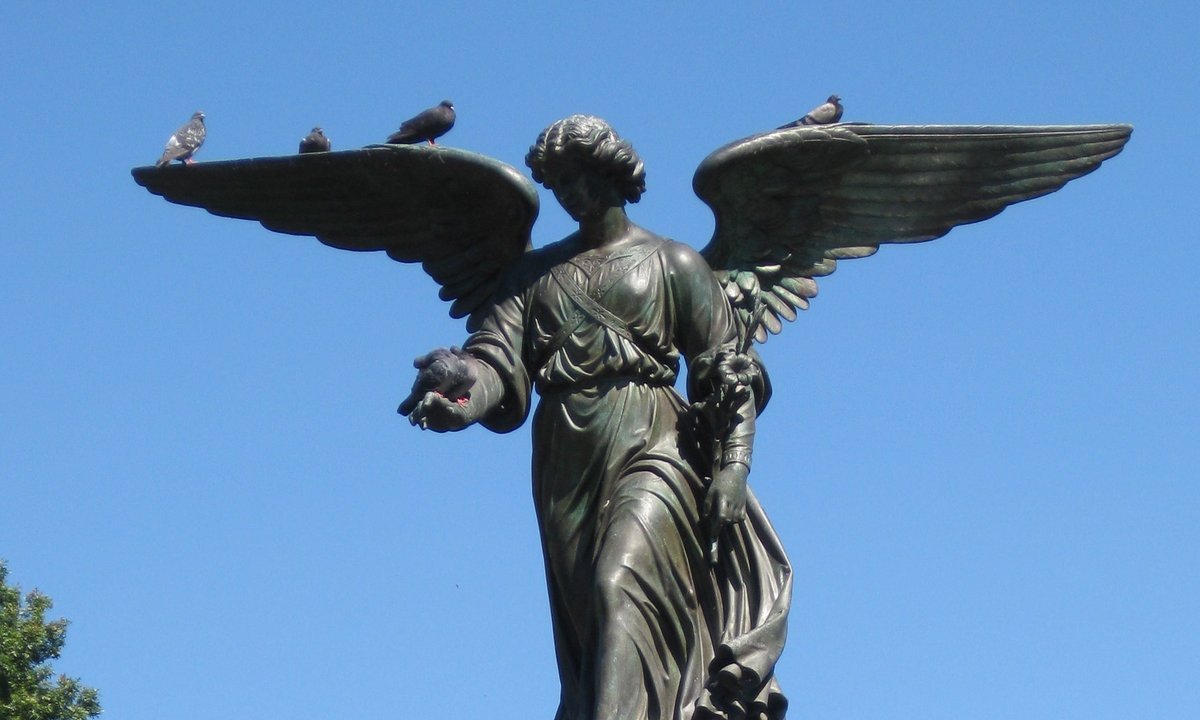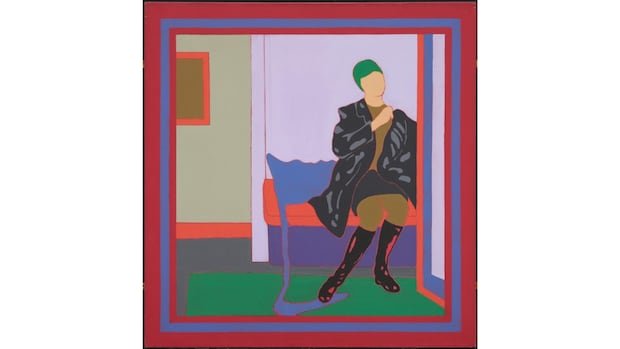Art Market
Paul Laster
Robert Frank, installation view of “The Americans, 1954-1957,” at Art Basel Unlimited 2024, presented in collaboration with Zander Galerie and Pace Gallery. © The June Leaf and Robert Frank Foundation. Photo by Sebastiano Pellion. Courtesy of Zander Galerie and Pace Gallery.
Institutional presence of photography
Zanele Muholi, installation view of “Zanele Muholi” at Tate Modern, 2024. © Tate (Larina Fernandes). Courtesy of Tate.
Photographers have been a long-standing presence in institutions, but recent years have seen an uptick in significant moments for some of the medium’s leading talents.
Wolfgang Tillmans’s blockbuster debut retrospective at MoMA in 2022 cemented the German photographer’s status as one of today’s leading artists and was one of the most acclaimed museum shows of the year.
Tillmans is far from the only leading name to have received their first retrospective. Hiroshi Sugimoto closed his first U.K. survey at the Hayward Gallery in London early this year (it’s currently on view at the UCCA in Beijing), and the artist recently joined Lisson Gallery. South African artist Zanele Muholi’s acclaimed show at Tate Modern is currently on view; while LaToya Ruby Frazier has been included in TIME’s 100 Most Influential People of 2024 and has a current, critically acclaimed retrospective, “Monuments of Solidarity,” at MoMA. Other leading historical names to receive debut presentations include Vivian Maier and Frank Stewart.
River Claure, installation view at 60th International Art Exhibition – La Biennale di Venezia, “Foreigners Everywhere,” 2024. Photo by Marco Zorzanello. Courtesy of La Biennale di Venezia.
At this year’s Venice Biennale, photography was also commonplace. Documentary photography, including Claudia Andujar’s photos of Indigenous Yanomami peoples and River Claure’s images of the Andean mining communities in Bolivia are a part of the main show, “Foreigners Everywhere.” The medium is also prominently on view in the pavilions of Denmark, Montenegro, and Romania. And collateral exhibitions include “Peter Hujar: Portraits in Life and Death,” at the Chiesa di Santa Maria della Pietà.
Auction demand for photographic works
Much like the art market as a whole, the market for photography at auction showed some signs of weakness in 2023. Sales at Christie’s, Sotheby’s, and Phillips were down by 16% compared to 2022, according to ArtTactic—a slump not as drastic as the decline of 27% over the same period for overall auction sales at the three houses. Notably, ArtTactic also found that sales volumes for photography in 2023 were the strongest since it started tracking the market in 2015, meaning that the works are becoming more commonplace at the major auction houses.
This year has yielded a number of significant auction results for some of the most acclaimed artists of the medium.
Peter Hujar, Self-Portrait (with string around his neck), 1980. Courtesy of Christie’s Images Limited, 2024.
Hujar’s Self-Portrait (with string around his neck) (1980) set an auction record for the artist when it sold for $252,000, more than five times the low estimate, at an online Christie’s auction in April. The sale also saw a significant result for Irving Penn’s The Hand of Miles Davis, New York, July 1 (1986), which sold for $302,400 against an estimate of $100,000–$150,000.
At Phillips, a sale of photographs from the Martin Z. Margulies Foundation resulted in nearly 90% of the lots being sold in or above their estimated range. Francesca Woodman’s From Space 2, Providence, Rhode Island (1975–78), estimated at $7,000–$9,000, sold for $63,500; and Cindy Sherman’s Untitled (Bus Riders I) (1976), estimated at $150,000–$250,000 sold for $190,500. Sherman’s work was the top lot of the sale, tied with Thomas Struth’s Pergamon Museum 1, Berlin (2001). The auction, which landed in the middle of the aggregate presale estimate range with total sales of $2.2 million, also saw a record auction price set for Alec Soth. Soth’s Charles, Vasa, Minnesota (2002) sold for $152,400, well above its $50,000–$70,000 estimate.
Other photographers to reach new auction benchmarks this year include Diane Arbus, whose Identical twins, (Cathleen and Colleen), Roselle, New Jersey, 1966 (1967) sold for $1.2 million at Christie’s in May.
Diane Arbus, Identical twins, (Cathleen and Colleen), Roselle, New Jersey, 1966, 1967. Courtesy of Christie’s Images Limited, 2024.
Beyond these top-line figures for established names in the medium, momentum is most pronounced in lower price points: ArtTactic found a 36% increase in sales value for photographs that sold for under $5,000 between 2022 to 2023, with levels up by almost 200% since 2019.
Photography at art fairs
Photography works are still something of a rarity at blue-chip art fairs, where photography has given way to more expensive paintings dominating the booth’s wall space.
“To not lose money or make the margins, galleries have to strategically take established and emerging artists to fairs,” said Anna Walker-Skillman, owner of Jackson Fine Art in Atlanta. “Ultimately, the prominent galleries have blue-chip artists selling at higher prices than even the most acclaimed fine art photographers. Photography, for the most part, has a lovely price point for remarkable work but does not compare to the prices that are set for the contemporary art market.”
Still, galleries are finding ways to exhibit these works at blue-chip events. In the Unlimited sector of Art Basel in Basel this year, Pace Gallery presented the last available complete set of Robert Frank’s “The Americans.” The series of black-and-white photographs documenting the artist’s trip across America from 1955 to 1957 was shown in collaboration with Zander Galerie.
Robert Frank, installation view of “The Americans, 1954-1957,” at Art Basel Unlimited 2024, presented in collaboration with Zander Galerie and Pace Gallery. © The June Leaf and Robert Frank Foundation. Photo by Sebastiano Pellion. Courtesy of Zander Galerie and Pace Gallery.
“We bring photography to major art fairs throughout the year, such as Art Basel and Frieze,” Lauren Panzo, vice president at Pace, told Artsy. “Photography is selling well, and we are very strategic about what we bring to each fair.”
On the opening day of the fair, a selection of images from Frank’s eponymous 1958 photo book sold for several million dollars. Another major photography sale from Art Basel was Sherman’s Untitled Film Still #48 (1979)—one of the artist’s most famous images—which was sold by Hauser & Wirth for $1.5 million.
There has also been a discernible movement in the sphere of art fairs dedicated to photography. Photofairs New York, launched last year alongside The Armory Show at the Javits Center, has been canceled this year but announced a new edition in Hong Kong, slated for next March. It has been running a Shanghai edition since 2014.
Other notable photography fairs include Paris Photo, AIPAD’s The Photography Show in New York, Photo London, Unseen in Amsterdam, and Photo Basel. Festivals such as Rencontres d’Arles in the south of France, FotoFest in Houston, and FotoFocus in Cincinnati, Ohio are also among the most popular in the art world.
New voices in photography
Outside of the most prominent names working in the medium today, gallerists report that the market is diversifying. “One of the most exciting aspects of photography’s recent development is the growing amplification of diverse voices and perspectives within the medium,” said Marie Audier D’Alessandris, founder of The Selects Gallery, which specializes in fine fashion photography editions.
Inclusivity and diversity are some of the defining features of galleries that are bringing more emerging photographers into their programs. Linda Pyke, a director at Cape Town and Cologne’s THK Gallery, noted an uptick of new photography talent from the African continent. “The medium has an immediacy that attracts young artists from Africa and the diaspora,” she said, namechecking talents such as Trevor Stuurman, Johno Mellish, Nonzuzo Gxekwa, and Manyatsa Monyamane as “ones to watch.”
This growing diversity is particularly important in the age of Instagram, where anyone can potentially be an artist, and artists from all walks of life can have a voice. Photography is playing a significant role in flipping the script on what we are now seeing in publications, galleries, museums, biennials, and art fairs, which grants us the opportunity to view the world as it actually is.






